Attachment & Love (Week 8)
1/46
There's no tags or description
Looks like no tags are added yet.
Name | Mastery | Learn | Test | Matching | Spaced |
|---|
No study sessions yet.
47 Terms
Deprivation of mother-infant attachment consequences
Longer w.o significant care = reactive disorder
Ie Romanian orphans
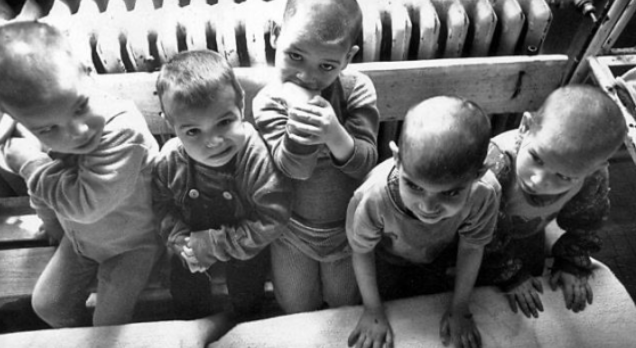
Liu et al. (1997) —> normal variation of mother-infant attachment
Examined relo. between maternal care & stress responses
>maternal = <stress
More glucocorticoid receptors in the hippocampus
Examined relo between materanl care & stress
Liu et al. (1997)
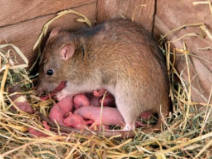
Rat maternal care behaviour
Licking & grooming, arched back nursing
Corticosterone related to ____
Stress
Stress related too ____
Corticosterone

Kaufman et al. (2004) —> gene x enviro interaction
II, sI, ss genes
Only greater depression for ss genes
Maltreated w. ss genes —> >depression scores
ss = serotonin transporter
Maltreated w. ss genes —> >depression scores
Kaufman et al. (2004)
Vasotocin is found in ____ for _____
reptiles, maternal behaviour
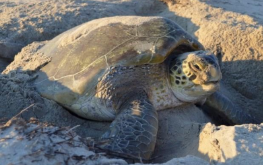
Mother turtles have ____ to help ____
Vasotocin, contractions to lay eggs
Evolution of vasotocin & usage
Oxytocin & Vasopressin
Reproductive + attachment behav.
Marlin et al. (2015) - Pup retrieval test
Found oxytocin tunes auditory cortex neurons to respond to pup distress calls
Pup retrieval test —> show naive virgin can’t hear & ignores isolated pup
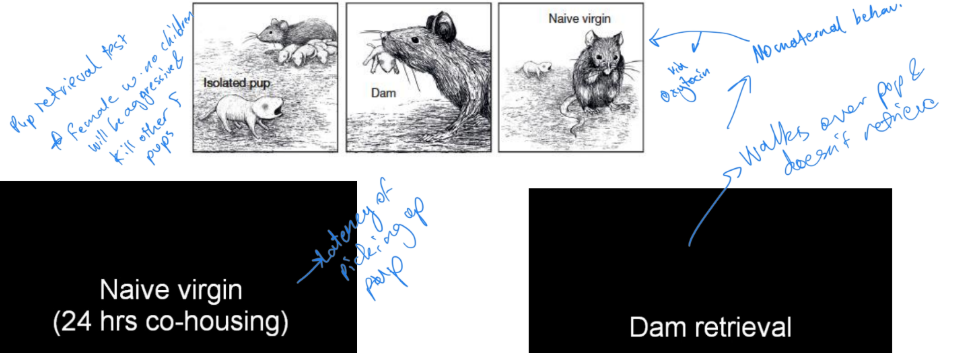
Oxytocin tunes auditiory cortex neurons to respond to pup distress calls
Marlin et al. (2015)
Where is oxytocin made
Hypothalamus
Hypothalamus makes ____
Oxytocin —> targeting auditory cortex
Increasing vasopressin leads to ____
Increase in paternal behaviour & monogamy
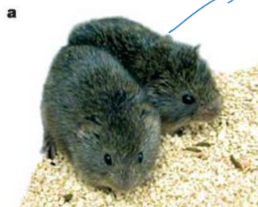
To increase paternal behaviour, increase/decrease _____
increase vasopressin
Vasopressin found in ___
Prefrontal cortex
Correlation between offspring & vasopressin
Indirectly proportion (negatively correlated)

Imprinting (Lorenz)
Image of mother stamped irreversibly on nervous sys during critical innate period
J.B. Watson (1928)
Propose attachment isn’t innate but learnt
Proposed that constant affection will encourage excessive attachment in infants
Should minimise affect displays

Reasoning behind Watson’s proposal
High death rate —> “isolatng” from disease also seen for attachment
Thought to have similar process

Harlow proposal, testing Watson’s idea
Cloth & Wire monkey
Preferred cloth monkey when distressed
Showed contact (tactile comfort) preferred over food
Spent most time with cloth mother
Went to cloth mother when distressed

Further research onto tactile comfort
Rocking & cradling just as important
Attachment Theory
Sensitive responding by parents to infant’s needs changes infant’s own attachment
______ is where the sensitive responding by parents to infant’s needs, changes infant’s own attachment
Attachment theory
Secure infant symptoms
Seek proximity/contact/greet parents at distance
_____: Seek proximity/contact/greet parents at distance
Secure infant attachment
_____: avoid parent
avoidant infant attachment
Resistant/ambivalent infant symptoms
Passively/actively show hostility towards parent
_____:
Passively/actively show hostility towards parent
Resistant/ambivalent infant attachment
Secure adults:
find it easy to get close to others without worrying about being abandoned
_____
find it easy to get close to others without worrying about being abandoned
Secure adults
Avoidant adults:
Uncomfortable being close to others, difficulty trusting others completely, don’t allow to depend on others, nervous when anyone gets too close
_____: Difficulty trusting others completely
Avoidant adult
Anxious/ambivalent adults:
Worry partner doesn’t actually love them
Want to merge completely w. another person —> scare ppl away
____: wan’t to merge w. another person
Anxious/ambivalent adult
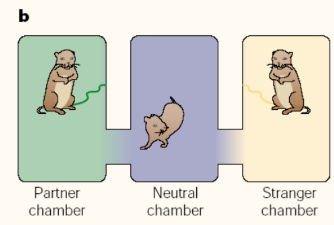
Findings (Montane vs Praire)
Montane preferred spending time with themselves (polygamous)
Praireie preferred w. partner
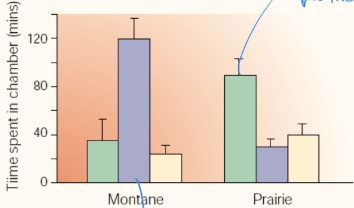
What if oxytocin in female prairie vole brain was blocked
Prevented formation of monogamous bonds
Preferred stranger
Prosocial behaviour in mouse
Pull on tongue & open mouth
Help remove

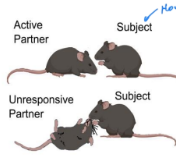
Oxytocin & prosocial behaviour (Sun et al.)
Silencing oxytocin = houesmate ignored anesthetised partner
Oxytocin = showed prosocial behav
Oxytocin roles: (4)
Promote maternal care
Monogamy
Reproductive behaviour: lactation, contractions
Increase prosocial behav.
Vasopressing role: (2)
Promote paternal care
Monogamy

Opponent processing & attachment
A process = seeing loved one
B process = Distress being apart
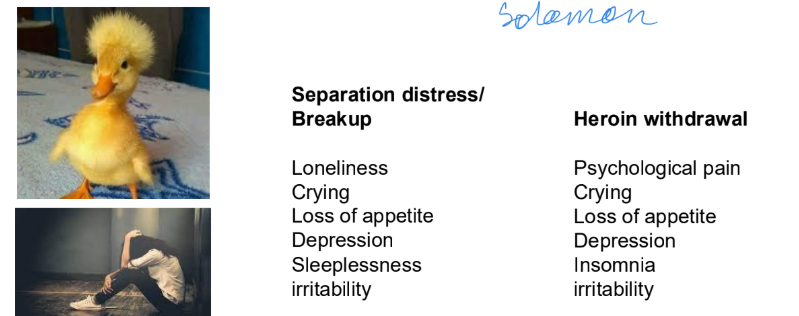
Weakening B process w. ducks
Isolate duck from mother
Unifying principle of attachment?
Shared vehavioural & brain mechanisms for different kinds of attachment & love